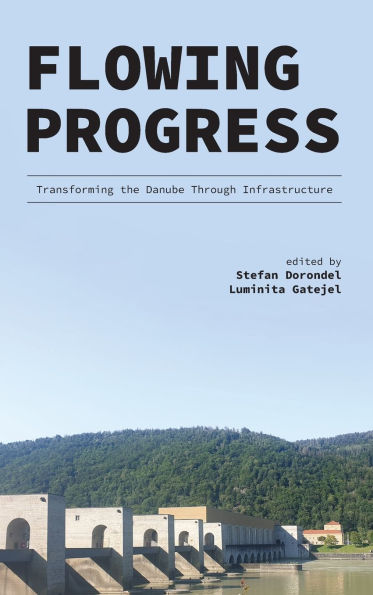Flowing Progress: Transforming the Danube Through Infrastructure
Flowing Progress: Transforming the Danube Through Infrastructure focuses on how different political regimes and forms of governance have imagined and technologically transformed the most international river in the world. Multidisciplinary and drawing on methodologies of history, anthropology of infrastructure, and science, technology, and society, this collection explores the tensions between the river and its natural pulses, the humans that populate its floodplains, state agencies, and infrastructure. The book engages the concept of disturbance to point out the circular and spiraling dynamics between hydrological processes and technopolitical and economic practices. Disturbance denotes a specific type of long-term dynamic between human attempts to control the Danube, the material systems they implemented to achieve these goals, and the agency of the river that both enabled the functioning of infrastructure and the breakdown of such arrangements. It draws particular attention to the concerted efforts to contain and optimize the Danube’s flow, adding layer after layer of dams, channels, and pipes that could potentially escalate the power of a leashed river. Taking a longer historical perspective from the sixteenth century until today, the volume provides a variety of relevant case studies and local contexts in the Ottoman and Habsburg empires, and their successor states Austria, Hungary, Bulgaria, Romania, and Serbia which show different ways of how humans have imagined and coped with this mighty river.
1146170408
Flowing Progress: Transforming the Danube Through Infrastructure
Flowing Progress: Transforming the Danube Through Infrastructure focuses on how different political regimes and forms of governance have imagined and technologically transformed the most international river in the world. Multidisciplinary and drawing on methodologies of history, anthropology of infrastructure, and science, technology, and society, this collection explores the tensions between the river and its natural pulses, the humans that populate its floodplains, state agencies, and infrastructure. The book engages the concept of disturbance to point out the circular and spiraling dynamics between hydrological processes and technopolitical and economic practices. Disturbance denotes a specific type of long-term dynamic between human attempts to control the Danube, the material systems they implemented to achieve these goals, and the agency of the river that both enabled the functioning of infrastructure and the breakdown of such arrangements. It draws particular attention to the concerted efforts to contain and optimize the Danube’s flow, adding layer after layer of dams, channels, and pipes that could potentially escalate the power of a leashed river. Taking a longer historical perspective from the sixteenth century until today, the volume provides a variety of relevant case studies and local contexts in the Ottoman and Habsburg empires, and their successor states Austria, Hungary, Bulgaria, Romania, and Serbia which show different ways of how humans have imagined and coped with this mighty river.
99.99
Pre Order
5
1

Flowing Progress: Transforming the Danube Through Infrastructure
338
Flowing Progress: Transforming the Danube Through Infrastructure
338
99.99
Pre Order

Product Details
| ISBN-13: | 9781626711167 |
|---|---|
| Publisher: | Purdue University Press |
| Publication date: | 08/15/2025 |
| Series: | Central European Studies |
| Pages: | 338 |
| Product dimensions: | 6.00(w) x 9.00(h) x (d) |
About the Author
From the B&N Reads Blog
